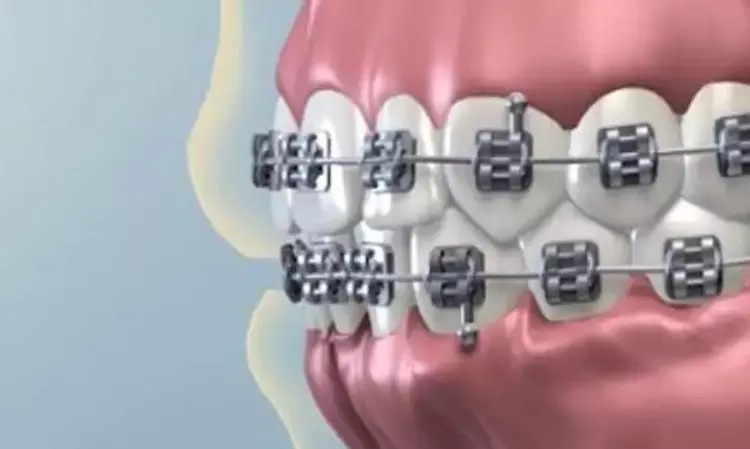- Home
- Medical news & Guidelines
- Anesthesiology
- Cardiology and CTVS
- Critical Care
- Dentistry
- Dermatology
- Diabetes and Endocrinology
- ENT
- Gastroenterology
- Medicine
- Nephrology
- Neurology
- Obstretics-Gynaecology
- Oncology
- Ophthalmology
- Orthopaedics
- Pediatrics-Neonatology
- Psychiatry
- Pulmonology
- Radiology
- Surgery
- Urology
- Laboratory Medicine
- Diet
- Nursing
- Paramedical
- Physiotherapy
- Health news
- Fact Check
- Bone Health Fact Check
- Brain Health Fact Check
- Cancer Related Fact Check
- Child Care Fact Check
- Dental and oral health fact check
- Diabetes and metabolic health fact check
- Diet and Nutrition Fact Check
- Eye and ENT Care Fact Check
- Fitness fact check
- Gut health fact check
- Heart health fact check
- Kidney health fact check
- Medical education fact check
- Men's health fact check
- Respiratory fact check
- Skin and hair care fact check
- Vaccine and Immunization fact check
- Women's health fact check
- AYUSH
- State News
- Andaman and Nicobar Islands
- Andhra Pradesh
- Arunachal Pradesh
- Assam
- Bihar
- Chandigarh
- Chattisgarh
- Dadra and Nagar Haveli
- Daman and Diu
- Delhi
- Goa
- Gujarat
- Haryana
- Himachal Pradesh
- Jammu & Kashmir
- Jharkhand
- Karnataka
- Kerala
- Ladakh
- Lakshadweep
- Madhya Pradesh
- Maharashtra
- Manipur
- Meghalaya
- Mizoram
- Nagaland
- Odisha
- Puducherry
- Punjab
- Rajasthan
- Sikkim
- Tamil Nadu
- Telangana
- Tripura
- Uttar Pradesh
- Uttrakhand
- West Bengal
- Medical Education
- Industry
Corticotomy or osteotomy may alter periodontal ligament strain during molar uprighting: Study

Uprighting mesially tipped molars is often a necessary step before implant placement. However, the orthodontic treatment can be lengthy and discourage patients from choosing implant prostheses. Periodontally accelerated osteogenic orthodontics is reported to facilitate molar movements.
However, different combinations of corticotomy and osteotomy have found to have a biomechanical impact on orthodontic molar uprighting movements, suggests a study recently published in the American Journal of Orthodontics and Dentofacial Orthopedics.
This study aimed to evaluate the biomechanical effects of various corticotomy and osteotomy approaches on the uprighting of a mesially tipped mandibular second molar in a 3-dimensional finite element analysis model.
Corticotomy was introduced as a surgical procedure to shorten orthodontic treatment time. Corticotomy removes the cortical bone that strongly resists orthodontic force in the jaw and keeps the marrow bone to maintain blood circulation and continuity of bone tissues to reduce risk of necrosis and facilitate tooth movement.
The initial tooth displacement and periodontal ligament (PDL) strain in 9 finite element analysis models with various corticotomy and osteotomy simulations were compared under 3 intended tooth movement scenarios: distal crown tipping, mesial root movement with restraints, and mesial root movement without restraints. The impact of corticotomy and osteotomy on molar uprighting was studied.
The following findings were observed-
a. Corticotomy or osteotomy approaches altered the tooth displacement and the PDL strain in all 3 intended molar uprighting scenarios.
b. The 2 most extensive surgical approaches, the combined mesial and distal osteotomy with horizontal corticotomy and the circumferential corticotomy at root apex level, resulted in increased tooth movement but had a distinct impact on PDL strain.
As a result, the authors concluded that different combinations of corticotomy and osteotomy had a biomechanical impact on orthodontic molar uprighting movements.
They further inferred that corticotomy or osteotomy has altered the periodontal ligament strain during molar uprighting and that the results may contribute to an optimal treatment protocol for molar uprighting.
https://doi.org/10.1016/j.ajodo.2020.06.034
Dr. Nandita Mohan is a practicing pediatric dentist with more than 5 years of clinical work experience. Along with this, she is equally interested in keeping herself up to date about the latest developments in the field of medicine and dentistry which is the driving force for her to be in association with Medical Dialogues. She also has her name attached with many publications; both national and international. She has pursued her BDS from Rajiv Gandhi University of Health Sciences, Bangalore and later went to enter her dream specialty (MDS) in the Department of Pedodontics and Preventive Dentistry from Pt. B.D. Sharma University of Health Sciences. Through all the years of experience, her core interest in learning something new has never stopped. She can be contacted at editorial@medicaldialogues.in. Contact no. 011-43720751
Dr Kamal Kant Kohli-MBBS, DTCD- a chest specialist with more than 30 years of practice and a flair for writing clinical articles, Dr Kamal Kant Kohli joined Medical Dialogues as a Chief Editor of Medical News. Besides writing articles, as an editor, he proofreads and verifies all the medical content published on Medical Dialogues including those coming from journals, studies,medical conferences,guidelines etc. Email: drkohli@medicaldialogues.in. Contact no. 011-43720751


